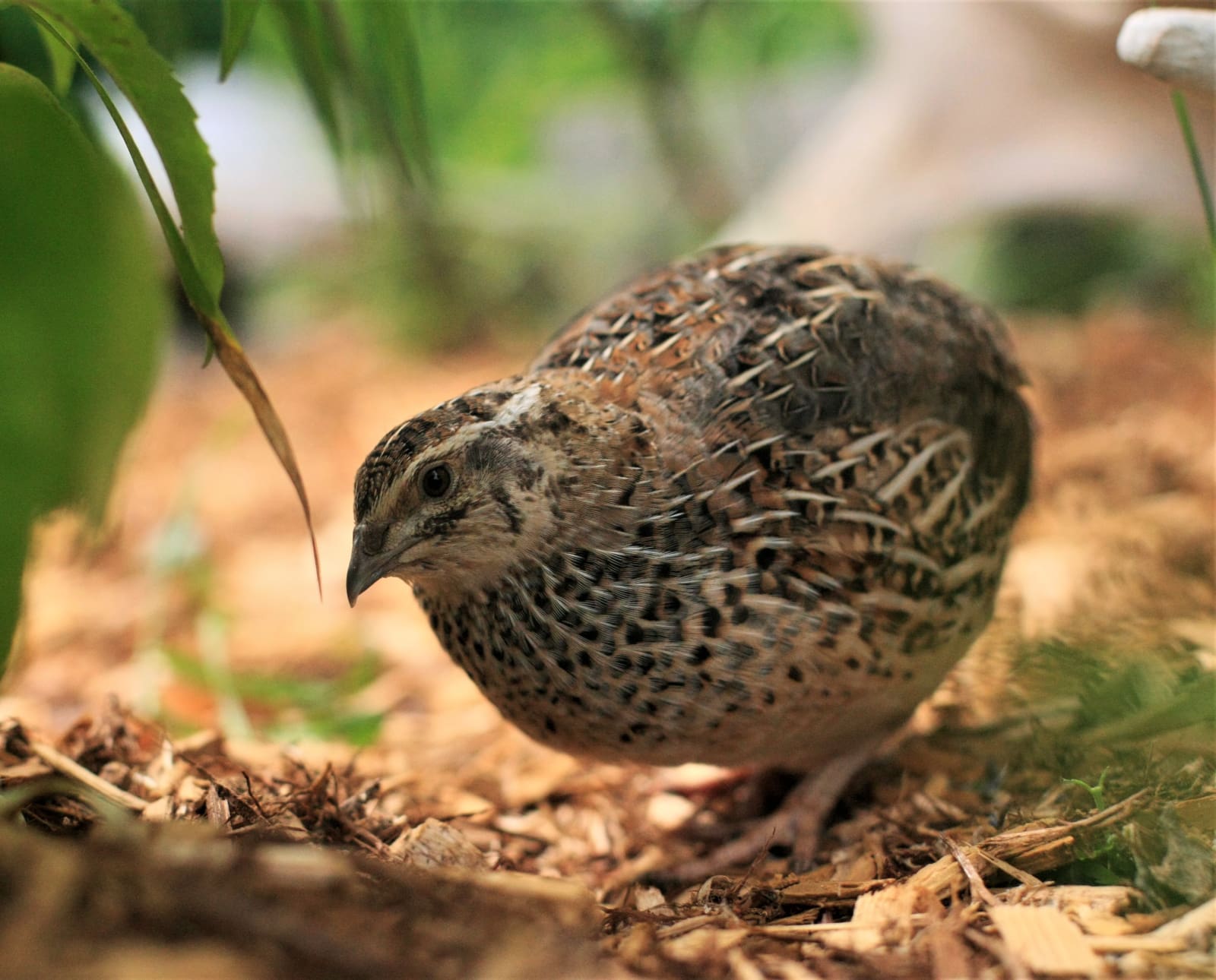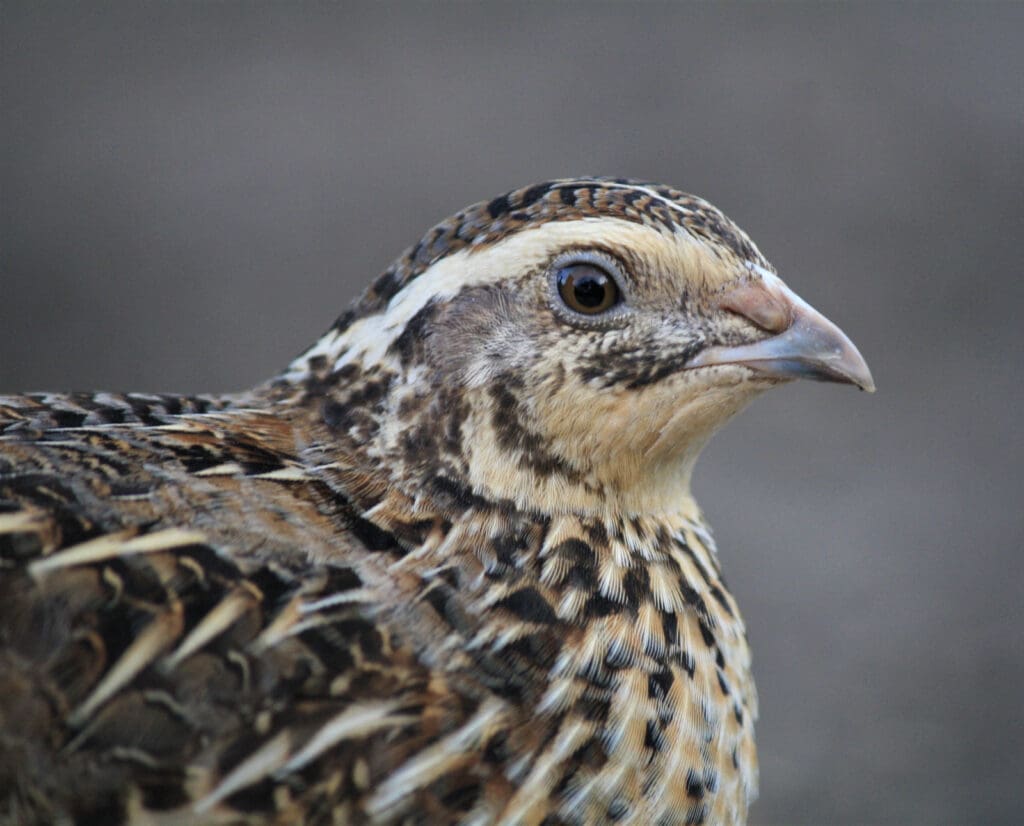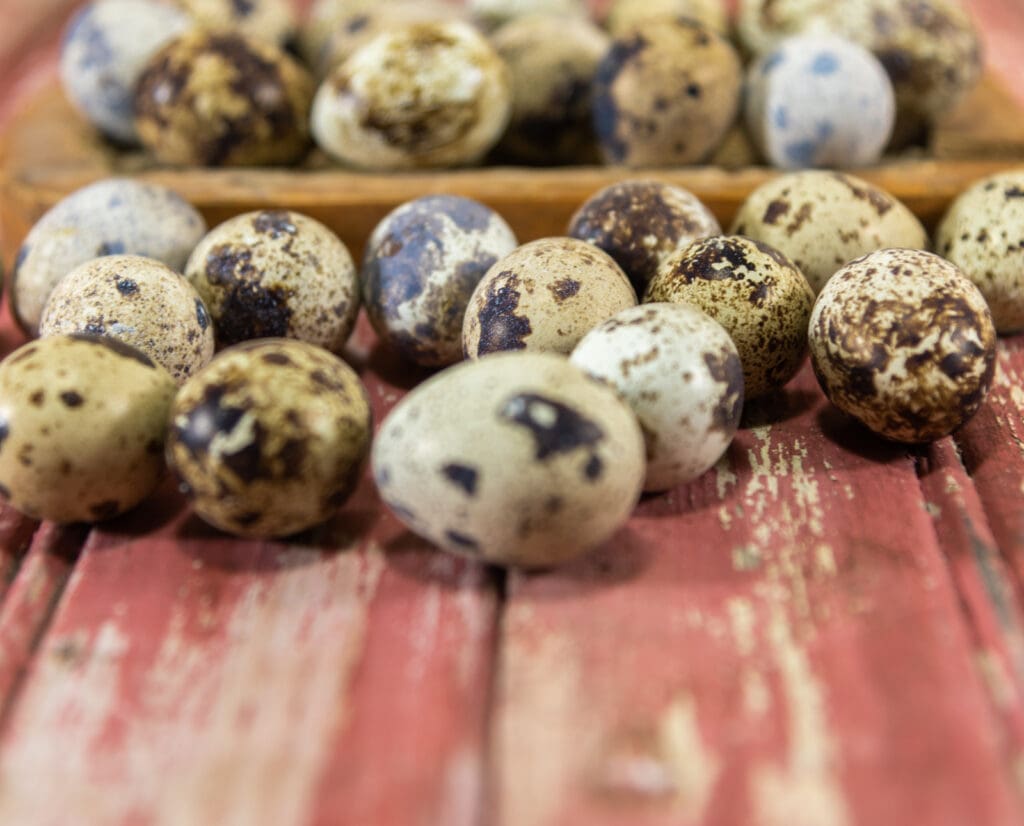Home » Homesteading » Tips on Raising Coturnix Quail in Your Backyard
Tips on Raising Coturnix Quail in Your Backyard

Born and raised in southern Ontario, it wasn't until Mike…
Learn all about housing, feeding, watering, and raising Coturnix quail in your backyard for home-grown meat.
A bird out there fills a niche that has trumped folks for a long time. I know this because I was one of them.
See, it’s like this – I wanted to start raising birds for eggs, meat, and the simple joy of reclaiming some independence. However, I lived in a town where the bylaws weren’t exactly kind to folks who broke them, whether by accident or design. I lived far enough down the backroads that a visit from a bylaw officer wasn’t much of a threat, but I do close enough to neighbours that would notice new chickens, too. Self-restraint got the better of me until a homesteader friend mentioned that he was dispatching his coturnix quail – a bird I’d never even heard of.
A year later, I’d purchased 35 tiny, peeping quail chicks. I knew I had a lot to learn, and over the subsequent years that followed, did I ever learn – sometimes the hard way. I hope the lessons with this story save you time, money, and a lot of heartbreak.
Coturnix Quail Mature Quickly
It took me a while to comprehend just how quickly these birds mature. At six weeks old, they are ready to be dispatched, or as I like to say, “Taken to freezer camp.” The hens will begin to lay eggs at eight weeks of age. Generally, if you’re keeping your birds around for the long haul, a two-year-old coturnix quail is an old bird. Personally, I like to swap out my flock at the end of the year and process all of my birds in mid-autumn. However, everyone who keeps these birds learns which method works best for them.
With the rapid succession from chick to adult, another issue that coturnix quail keepers have to be vigilant about is the males reaching sexual maturity. I’ll put this as politely as I can – they become extremely sexually aggressive towards the hens, which can cause your birds a lot of stress.
My method of dealing with their sexual aggression is to segregate the vast majority of males from females when they reach five to six weeks of age. Then, I cull them. If you plan to keep some of the males for breeding purposes (I do, and I highly recommend it), a good ratio is one male for every eight to ten females. This might seem like a pretty big ratio, but trust me, the little fellas won’t have any problems tending to the needs of the hens.

Watering Your Coturnix Quail Chicks
The first lesson I learned firsthand occurred shortly after bringing my first batch of quail chicks home. I researched the birds as much as possible, found a reputable breeder who had been raising coturnix quail for quite a long time, and felt confident that there wouldn’t be any immediate complications. However, that changed about six hours into having the chicks in their brooder.
They seemed to settle in quite nicely. They found their food dish and water container just fine. After watching them for a couple of hours, I left to get some other things accomplished. When I came back, four dead chicks were face down in their waterer. I was in absolute shock. The waterer, built to accommodate standard-size poultry chicks and ducklings, was just deep enough that the little quail could, and would, drown in it. This was an easy problem to remedy; all it took was filling the basin of the waterer with some small stones so the chicks could still drink but couldn’t commit suicide.
Feeding Your Coturnix Quail Chicks
Unlike the chicks and ducklings we sometimes raise on our quarter acre, quail pretty much eats the same food from day one until the end of life. I keep my birds on a medicated turkey starter, which is available at most co-ops and feed mills, and by the time they’re adults, I switch to unmedicated. There are plenty of specified gamebird feed options from companies like Purina, but they’re often hard to source and much pricier. In the end, I never noticed any difference in the health of my quail whether they ate turkey starter or gamebird feed.
Housing Coturnix Quail
Where and how you decide to house your birds will depend on what your property setup looks like. Generally, you’ll want to pick a location where the birds will get ample sunlight – more daylight hours equate to better egg production (trust me, you will certainly want the best egg production you can get out of your birds). Because I don’t keep my quail year-round, I chose a location that gets plenty of summer sun but is shaded during the harshest afternoon heat.
Next, you will have to decide whether to keep your birds on the ground in a pen or raised off the ground in something akin to a rabbit hutch. Both styles have pros and cons, which I get into in another article, but do your research and understand what setup works best for you and your birds. It will go a long way toward having a happy covey.

Protect Your Coturnix Quail From Predators
Whatever house you build, you must ensure it is 100 percent predator-proof. The list of critters running around that won’t hesitate to make a meal out of a covey of coturnix quail is as long as it is wide. Your mind might jump to the usual suspects, like foxes, coyotes, weasels, hawks, and raccoons. However, it’s been my experience that there is one predator that, as far as notoriety is concerned, will clean you out of birds quicker than anything else: rats.
I know, right? This surprised the hell out of me until a couple of years ago. I noticed that none of my quail were laying eggs anymore, and they seemed to be genuinely spooked all the time. One morning, I woke up and found my entire flock had their heads chewed off. Some birds had been dragged up to the mesh, where the rat tried to pull the bird through without success.
I couldn’t figure it out. How on earth did the little demon get inside?! A thorough investigation revealed that the rat had tunneled from more than six feet outside the pen, found a soft spot underneath the foundation, and stashed the quail eggs away for days. When the birds completely stopped laying, the rat killed them.
That was an expensive lesson to learn, and I had to learn it the hard way. I trapped the rat in question and dispatched it, but the damage was done.
Rat-proofing is relatively simple, especially if hardware cloth is used for the walls of the enclosure. Don’t skimp on this if you want your birds to make it through adulthood. Keep their food stored in a different location and clean their pen often to avoid any pests that might be attracted to the scent of it. Even if predators can’t get in your pen, that doesn’t mean they won’t damage the outside of it. Another great way to see what visits your quail coop at night is to set up a motion-sensor game camera and then deal with the threats accordingly.
For all that can go wrong with raising coturnix quail, all threats to the birds can be mitigated and dealt with outright with a bit of forward thinking. Having a covey that will give you fresh eggs and a freezer shelf of quail meat is totally worth the price it costs to get into this venture. Frankly, if you’re anything like me, you won’t be sorry that you did.
Born and raised in southern Ontario, it wasn't until Mike was in his late twenties that he started hunting and immediately took a strong liking to the pursuit of small game. Snowshoe hare, cottontails, eastern grey squirrels, grouse, and woodcock all have a place in his heart. When not in the woods, Mike is on the water with a fly rod chasing fish with flies that I tied from the animals he's hunted. What a life!






Great article! Very detailing. I have hens, and I’m thinking about j7mp in to the Quail adventure. They’re much easier to take care of.
i have a hanging cage in an old barn. VERY old barn, read impossible to rat proof! My quail are in a hanging cage. They keep loosing toes! Will 1/4″ hardware cloth on walls, floor, ceiling- EVERYWHERE stop the blasted rats? We keep getting more and more as the neighbour keeps throwing trash down her back hill so droves of them seem to come from her house. i would consider a solid bottom but shavings are also really expensive here. thanks!